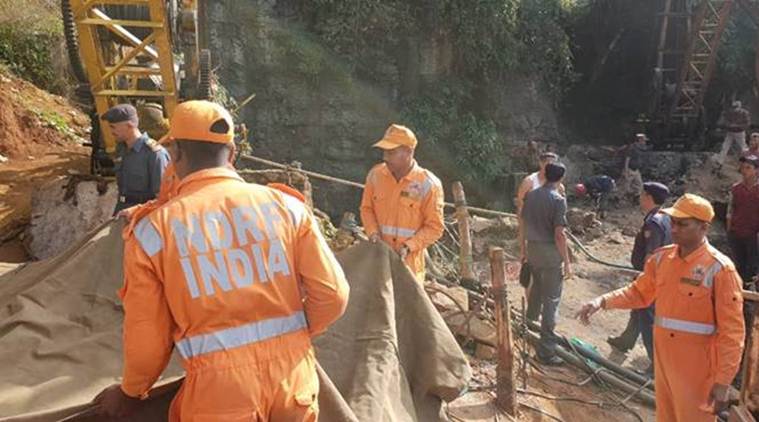Six Days on, Fourteen Miners Remain Trapped in Flooded India Coal Mine

By Abhishek Saha
December 18, 2018 - The mine has been termed "illegal" by activists, since coal mining in Meghalaya using the ‘rat-hole mining’ technique — which accounts for most mines in the state including the one in which the accident occurred — has been banned by the National Green Tribunal (NGT) in 2014.
Search operations to rescue trapped miners in Meghalaya’s East Jaintia Hills (EJH) district continued unsuccessfully for the sixth straight day on Tuesday amidst heavy rains. The state police officially confirmed the identity of another worker inside, which takes the number of trapped miners to fourteen.
On Thursday, an illegal coal mine at Ksan in Saipung area of the district collapsed and got flooded from the adjacent Lytein river, trapping the 14 workers. The miners are feared dead now although personnel of the NDRF and SDRF continue the search operations.

The miners are feared dead now although personnel of the NDRF and SDRF continue operations.
Although the mine owner James Sukhlain is still absconding, police arrested one Jrin (alias Krip Chulet of Norman village of the district) in the case Friday late night.
The mine has been termed “illegal” by activists since coal mining in Meghalaya using the ‘rat-hole mining’ technique — which is used in most mines in the state including the one in which the accident occurred — has been banned by the National Green Tribunal (NGT) in 2014.
The technique primarily comprises digging a narrow tunnel to reach coal seams underground. At the bottom tunnel, where coal seams are found, ‘rat holes’ — just big enough for a worker to enter — are dug in several directions for workers to move in. At the fatal mine in Ksan, the tunnel is around 400-feet deep.
“It has been raining incessantly since last evening, and that has caused problems in the search and rescue operations. Even reaching the spot is extremely difficult today. We need more effective pumps to pump out the water from the mine — and the ones being used now are not enough,” Superintendent of Police of EJH district, Sylvester Nongtnger told The Indian Express.
He added that the fourteenth worker believed to be trapped has been identified as Abdul Kalam Sheikh from Magurmari village of West Garo Hills district of Meghalaya, from where another four trapped workers were identified previously.
“The water level inside the mine is not receding. The kind of machinery required to pump out water is not available with the rescue teams. The process to acquire such pumps from the ONGC (Oil and Natural Gas Corporation) is going on,” a top Meghalaya police officer told The Indian Express.
Federick M. Dopth, deputy commissioner of EJH district, told The Indian Express that he has written to the state government regarding the same and also given an assessment of the rescue operation.
Meanwhile, Meghalaya chief minister Conrad Sangma — who had admitted a day after the incident that illegal mining was going on in the state — has reiterated that although strict action against any illegal coal mining is taken whenever reported, the size of the state and the remoteness of the certain mining locations often makes it difficult for the police to track down illegal mining.
The accident comes on the heels of an attack in November on activist Agnes Kharshiing, who has been vocal against mining in Meghalaya despite the NGT order, and her colleague Amita Sangma by goons hired by the coal mafia in the same district while they were trying to locate an illegal mine.
Coal mining in Meghalaya is said to be prevalent from the mid-19th century but acquired commercial proportions in the 1980s. According to available data, when the NGT ordered the ban, the annual coal production was nearly six million metric tonnes (MT).

